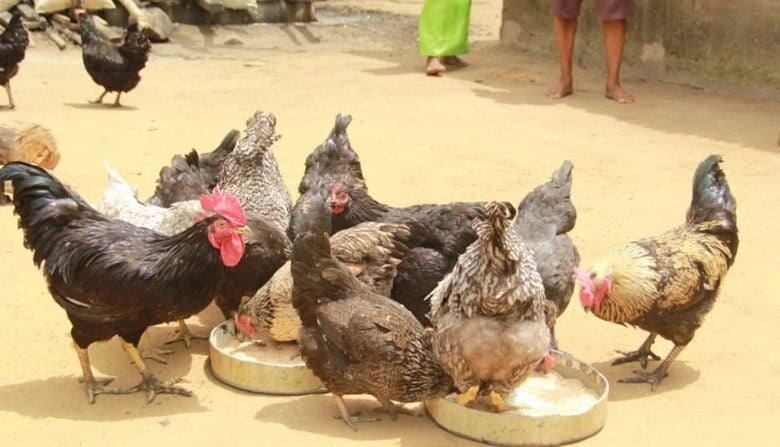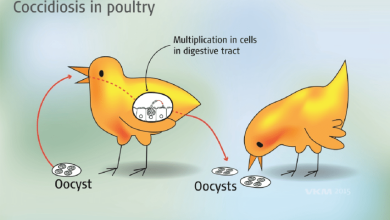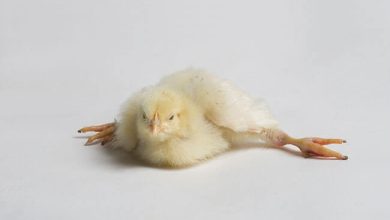RURAL POULTRY FARMING

RURAL POULTRY FARMING: PAST, PRESENT & FUTURE
Dr. Prashant Maru1
Dr. Mayank Goswami1
1College of Noble Polytechnic in Animal Husbandry, Junagadh, Kamdhenu University, Gujarat
INTRODUCTION
The livestock sector is one of the fastest growing segment in Indian agriculture, and within livestock sector, the poultry husbandry has occupied a pivotal position both in providing employment as well as in contributing a substantial proportion to the national Gross Domestic Products. The world poultry meat production increased from 91.9 to 103.5 million tonnes from 2017 to 2021. India is currently producing 4.25 million tons of chicken meat and egg production has shown an increase of (7%). India stands at 3rd position for hen egg production with 122 billions of hen eggs/year
The concept of backyard poultry farming is as old as civilization. Nearly three and half decades back, most of the chicken eggs and meat were coming from traditional poultry. Backyard poultry in India is characterized by small flock size consisting of 5-10 predominantly non-descript birds. Indigenous source of poultry eggs and meat are always appreciated for their taste and texture, in both rural and organised developed markets. Market studies show prices per kg live weight for these birds can be 50 –100 % higher than that of industrially produced birds.
RURAL/BACKYARD POULTRY
Rural/backyard poultry is a low input or no input business and is characterized by indigenous night shelter system, scavenging system, with little supplementary feeding natural hatching of chicks, poor productivity of birds, local marketing and minimal health care practice (Mandal et al 2006)
WHY RURAL/BACKYARD POULTRY FARMING ?
- Low initial investment but higher economic return.
- Egg and birds can be sold in local market with high price, because there is a growing demand for local chicken.
- The consumers are willing to pay higher prices for high quality desi chicken meat or egg.
- Boost up in family income for better utilization of family labours who are not able to perform other agricultural works like old family member or children.
- Backyard poultry farming acts as an ‘ATM’, because as per family need the birds and eggs can be sold at any time anywhere with cash in hand.
IMPROVED STRAIN OF POULTRY BIRDS FOR BACKYARD FARMING
Native or “desi” birds typically provide poor quality eggs and meat. The country urgently needs to advance backyard poultry farming with improved strains of chicken birds that perform admirably when kept in backyards with minimal inputs in order to maximise profit from backyard poultry farming. Improved chicken that can be introduced in backyard poultry farming should have following characters- colour of the bird, Morphology and temperament of the bird, Productivity of the birds, Disease resistance, Adaptability to the tropics and Self Propagation. Considering the above characteristics the verities that can be recommended for rural/backyard poultry farming are
| Name of the variety | Name of organization | Purpose |
| Grampriya | PDP Hydrabad | Egg |
| CARI Nirbheck | CARI, Izatnagar (U.P.) | Egg |
| CARI Shyama | CARI, Izatnagar (U.P.) | Egg |
| CARI Hitcari | CARI, Izatnagar (U.P.) | Egg |
| CARI Upcari | CARI, Izatnagar (U.P.) | Egg |
| Gramalaxmi | KAU Mannuthy | Egg |
| Vanraja | PDP Hyderabad | Dual |
| Giriraja | UAS, Bengalore | Dual |
| Krishnapriya | KAU, Mannuthy | Dual |
| Gramshree | KAU, Mannuthy | Dual |
| Kuroiler | Kegg Farm, Delhi | Dual |
| Krishi- Bro | PDP Hyderabad | Meat |
| CARI Dhanaraja | CARI, Izatnagar (U.P.) | Meat |
The annual egg production capacity of egg purpose birds are 160 to 220 egg/ bird/ year, respectively. First egg lays at 200 to 230 days depending on breed and plane of nutrition and other manage mental parameters. Egg weight varies from 35 to 60 gram. Mature body weight1.5 to 2.5 kg (Malik and Singh, 2009).
FUTURE STRATEGIES
- There is a need for creating awareness about various aspects of managemental practices for rearing improved varieties of the birds.
- There should be a co-ordination research programme which address the problems of breeding, feeding , housing and disease control in rural/backyard poultry farming.
- Special emphasis is needed for marketing of rural poultry products coming from the backyard poultry farming.
- In case of for meeting the increased demand of genetic material, Public Private Partnership (PPP) initiatives are needed to be planned for future.
- There is needed to be establishment of mother nursery to rear the chicks up to 4-6 weeks.
- Special emphasis is needed for marketing the rural poultry products coming from rural/backyard poultry farming.
CONCLUSIONS
Poultry keeping is recognised, as an important subsidiary sector for the poor classes in the rural areas of India. From 2012 to 2020, the total population of backyard poultry in rural areas positively increased with 45% change. A wide gap exists between availability and (ICMR) recommendation for eggs and poultry meat, which indicate that there is wide scope of poultry development. Backyard poultry farming provides employment, additional income to the rural households enhances the soil fertility and can be easily integrated with livestock farming practices. Poultry products from rural poultry farming fetches premium price with almost no or very less investment as compared to intensive poultry farming. Implementation of suitable operational models to reach the targeted group will enhance the growth of rural poultry farming.







